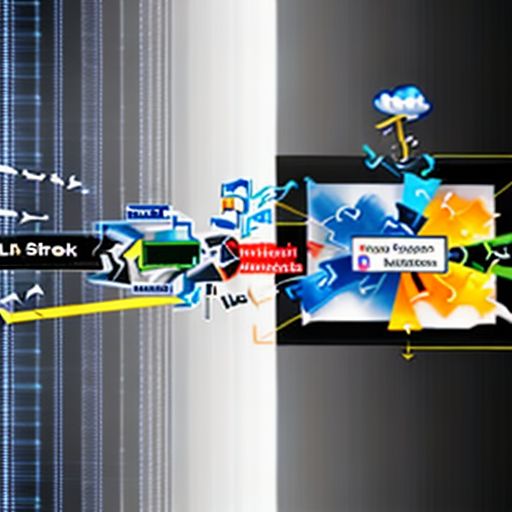In today’s digital landscape, where businesses heavily rely on web applications, ensuring their security has become paramount. Imagine this: you’ve poured your heart and soul into building a successful online platform, only to have it compromised by malicious attacks. The consequences can be devastating – financial losses, data breaches, and irreparable damage to your reputation. This is where Web Application Security Solutions come into play.
What are Web Application Security Solutions?
Web application security solutions encompass a range of technologies, processes, and best practices designed to safeguard web applications from cyber threats. Think of it as a fortified shield protecting your valuable data and functionality from unauthorized access, data breaches, and other malicious activities.
Why are Web Application Security Solutions Crucial?
The importance of web application security solutions cannot be overstated. Here’s why:
- Protecting Sensitive Data: Web applications often store and process sensitive information, such as customer details, financial records, and proprietary business data. Security solutions help prevent data breaches and ensure compliance with regulations like GDPR and HIPAA.
- Maintaining Business Continuity: Attacks on web applications can lead to downtime and disruptions, impacting revenue and customer trust. Robust security measures minimize the risk of such disruptions.
- Safeguarding Reputation: A security breach can severely damage your brand’s reputation and erode customer confidence. Implementing strong security measures demonstrates your commitment to protecting user data and building trust.
- Evolving Threat Landscape: Cyber threats are constantly evolving, becoming more sophisticated by the day. Security solutions need to stay ahead of these threats to provide effective protection.
Frequently Asked Questions about Web Application Security Solutions
What are the most common types of web application attacks?
Understanding the threats is the first step in defending against them. Some prevalent attack vectors include:
- Cross-Site Scripting (XSS): Injecting malicious scripts into websites to steal user data or hijack sessions.
- SQL Injection: Exploiting vulnerabilities in database queries to gain unauthorized access to sensitive information.
- Denial-of-Service (DoS): Overwhelming a web application with traffic, rendering it unavailable to legitimate users.
- Cross-Site Request Forgery (CSRF): Tricking users into performing unintended actions on a website, such as making unauthorized transactions.
How can I choose the right Web Application Security Solutions for my business?
Selecting the appropriate security solutions depends on various factors, including your application’s specific needs, budget, and risk tolerance. It’s essential to consider a multi-layered approach that combines different security measures for comprehensive protection.
security.yougaming.xyz/wp-content/uploads/2024/07/web application security layers-66922c.jpg" alt="Web Application Security Layers" width="512" height="512">Web Application Security Layers
Key Components of Web Application Security Solutions
Effective web application security solutions typically incorporate a combination of the following:
1. Web Application Firewalls (WAFs)
WAFs act as a protective barrier between your web application and the internet, filtering out malicious traffic based on pre-defined rules and signatures. They help mitigate common threats like XSS and SQL injection.
2. Secure Development Practices
Building security into the software development lifecycle (SDLC) is crucial. This includes secure coding practices, regular code reviews, and vulnerability testing to identify and address security flaws early on.
3. Vulnerability Scanning and Penetration Testing
Regular vulnerability scans and penetration testing help identify weaknesses in your web application’s defenses. These tests simulate real-world attacks to uncover vulnerabilities that attackers could exploit.
4. Access Control and Authentication
Implementing strong authentication mechanisms, such as multi-factor authentication (MFA), helps ensure that only authorized users can access sensitive data and functionalities.
5. Security Monitoring and Incident Response
Continuous security monitoring and incident response capabilities are essential to detect, analyze, and respond to security incidents promptly. This includes log analysis, intrusion detection systems, and security information and event management (SIEM) solutions.
Conclusion
In today’s interconnected world, securing your web applications is not just an option but a necessity. By investing in comprehensive web application security solutions, businesses can protect their sensitive data, maintain business continuity, and safeguard their hard-earned reputation. Remember, a proactive approach to security is always better than a reactive one.
We encourage you to share your thoughts and experiences with web application security in the comments section below. Have you encountered any security challenges? What measures have you taken to protect your web applications? Let’s learn from each other and build a more secure online world.
